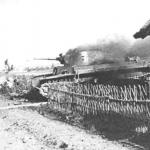Or a gate? Rarely does anyone think about this issue, because products of this type are purchased completely ready for installation, which is also entrusted to the craftsmen of the manufacturer. However, sometimes you still need to know the welding technique in order to weld hinges - regular (round) or teardrop-shaped - according to all the rules.
What is the difference between the loops?
The teardrop-shaped canopies seem to be elongated - there is vertical thinning. If you look at such a loop from above, its shape will resemble a drop. It is easier to handle such canopies - there is no need for additional work, which consists of welding metal plates to ordinary hinges - one is attached to the top of the mechanism, the other to the bottom. Otherwise, there is no difference between the two types of awnings.
It is easier to weld the hinges to the gate due to the light weight of the structure.
Welding rules
For work you will need the following tools and materials:
- construction level, preferably laser;
- roulette;
- welding machine with electrodes with a diameter of 3 mm and protective equipment;
- overalls - clean, without oil or other stains from flammable liquids;
- Bulgarian;
- hammer;
- lubricant (solid oil will do);
- brush or roller for painting;
- dye.
The welding process is usually carried out in a vertical position of the sash. If there is a need to strengthen an existing weld, the structures must be removed from their hinges. You cannot cook without removing the gate.
Photos on the rules for welding garage hinges
Let's say that the corner on the left is the frame of the garage door, and the profile on the right is the sash. |
We attach our loop to the frame and scald it on both sides. |
To connect the frame to the sash, we weld the upper part of the hinge from below and from above using a sheet of metal. The reliability of the fastening is low due to the fact that the metal often leads during welding. |
A more reliable way is to weld the loops through the flags. The lower part of the flag is welded to the frame on both sides. |
To connect, we weld the upper part of the flag to the sash. |
We place a sheet of metal on top (on the flag) so that it “fits” onto the frame. This way, welding hinges on garage doors is much more convenient, much simpler and much more practical. |
Welding technology
- Make markings. Using a tape measure and a pencil or chalk, mark the places where the loops will be placed. It is recommended to retreat from above and below by about a quarter of a meter. In production, after certain calculations, which help to avoid skewing of the door leaf during operation (if you weld the hinges too close to the edges, the upper part will pull the block forward and down too much due to the large weight).
- Lubricate the hinges with grease to avoid caking, then grab them in several places: first the lower half, then put the upper half on it and check whether you are moving in the right direction. Now disconnect the loop and weld its upper part - just a little, so that it just holds. Next, you need to check with an assistant how the gate behaves, whether it is warped.
- If everything is fine, they weld thoroughly. Drop-shaped loops - along the entire thinning, simple - along the long side of the additionally attached plate.
- Check how the curtains close. If everything is fine, the simple loops are finally welded - around the perimeter of the additional plate.
Don't forget to set the technological distance between the sashes and the frame.
Clean the welding areas using a grinder, then completely prime the door leaf and frame. Once the primer has dried, paint with your chosen paint.
Always mark, do not cook by eye. Before work, check whether the equipment is in good condition. Only by following the rules can you get a high-quality weld and a normally functioning metal structure.
The STROYSTALINVEST company is engaged in the production of custom-made garage doors. To clarify details, contact the manager by phone listed on the website, or request a call back.
When repairs are made and the area is being improved, one of the most common operations is welding hinges. It should be noted that welding hinges to the gate correctly is not so easy even for specialists, and if we are talking about beginners, then they experience a lot of difficulties. So how to weld hinges for those who do not have relevant experience in this matter, and is it possible? It is quite possible for people with no experience to weld hinges to the gate themselves.
But it must be taken into account that such an operation involves some nuances. First of all, you will need the following tools:
- Hammer.
- Roulette.
- Building level.
- Welding machine.
- Protective mask.
- Protective gloves.
How to weld hinges? General rules
When welding is carried out, safety precautions must be followed to help prevent injury. Among the safety measures, special attention should be paid to the fact that you must work only in a protective mask and special gloves. Under no circumstances should such work be carried out in places where there is dry grass, otherwise a fire cannot be avoided.

Welding the gate must be done carefully and very carefully, this will result in a gate of excellent quality.
It is necessary to retreat approximately 20-25 cm from the bottom and top of the canvas (it is to the canvas that the hinges will need to be welded), this distance should be measured with a construction pencil. Then the hinges must be thoroughly lubricated with grease; this must be done so that the hinge halves do not sinter during the welding process. To do this, place a match under each of the loops along the edges. With the help of such a simple manipulation, you can ensure that the door does not jam during welding work.
The door leaves must be wedged so that when closed the doors are in the correct position; for this, the door leaves are pre-aligned.
When the hinges are welded to the gate, they should only be lightly welded.
In this case, you must remember that the lower half of the part is welded first. Those who use a welding machine for the first time need to know that the loop should be welded from the bottom up, and the movements of the electrode should be horizontal and not sharp.
After the first seam is welded, the gate must be wedged and checked to see how well it opens and closes. The hinges must be permanently welded, but only if the doors function well. This should not raise any doubts; this is the only way to weld the hinges to the gate correctly.
After all this, the frame is removed from its hinges, thoroughly coated with grease, then it is carefully seated in place. The places where welding was carried out must be processed with a grinding machine, after which the entire product is coated with paint. The ideal design is one that opens quickly and easily, and should close with one easy movement of the hand.
It is not recommended to carry out welding work alone; this causes certain difficulties. But if this cannot be avoided and there are no assistants, then you can weld the hinges to the gate on the ground, but you must immediately take into account that the quality of such work cannot be called impeccable.
What not to do when welding hinges?
What is forbidden to do when welding, how to properly weld hinges to the gate so that there are no negative consequences? Here you need to consider the following:
- Under no circumstances should you operate equipment that is faulty.
- There is no need to carry out welding work until the paint has completely dried.
- You should never carry out welding work in clothing that contains traces of oil, grease, gasoline, or other flammable liquids.
- Welding of pressure vessels is strictly prohibited.
- Do not hang rags or rags soaked in oil on the cylinders. This is what often caused fires.
If everything is done correctly, the result will be impressive, and you can then advise your friends on how to weld hinges reliably and efficiently.
The goal of the gate is to lock securely, withstand force loads, and be functional. Another good gate is that it opens and closes comfortably. You not only need to know how to weld hinges on a gate or wicket, but also be able to use electric arc welding, then everything will be done efficiently and correctly. When the elements are welded correctly, the gate will open well. At the same time, there will be no gaps in the closed gate.
In the context
Types of loops:
- Cylinder-shaped (drop-shaped) - the design has a support bearing, is not used for light gates, load - up to 400 kg.
- In the form of a cylinder with an amplifier - the design includes a support bearing, and for reinforcement there are plates that are designed for better load distribution. For such loops the maximum load will be 600 kg. They are fastened by welding or screws and are suitable for swing gates.
- Through - this type of hinge is used when it is not possible to weld them or use screws. To fix such a hinge, you need to drill through the post, and it will be attached to the sash using nuts. Can withstand a maximum of 200 kg.
- Three-section - for very heavy large sashes. They are highly resistant to burglary. They are secured by welding.
- Forged (zhikovina) - the installation of hinges of this type has been used since ancient times. In addition to the fact that they perform their function well, these loops are very decorative. It is best to use them for wooden gates.
- Arrow hinge – made of steel, with hinges, suitable for heavy gates made of thick metal. They can be made curly. They are most widespread when used on garage doors.
- Adjustable - provide for changing the position of the sashes in height. They are usually used when they can change their position. The maximum load of these loops is 200 kg.
Balls for easy and smooth opening
Installation diagram
We weld hinges to gates made of corrugated sheets
If the gate is made of corrugated sheets, then you need:
- Make jumpers parallel to the top.
- Fix them.
- By their location, they should divide the canvas into three equal parts.
- Weld the elements.
- Cover them with corrugated sheets.
Installing hinges on a profile fence is slightly different from the classic version, which does not have any additional complications and does not require unnecessary effort. But you will have to do the following:
- make two small jumpers that are inserted parallel to the long sides and secured at the top and bottom;
- the distance should be for three such parts;
- We weld hinges to the jumpers.
After installation
The profile is screwed onto already installed elements. If you do this earlier, then during welding it will burn out and lose its aesthetic appearance. To perform such work, the best option would be to use garage door hinges. Each welded loop can withstand a fairly large load.
Correct installation of embedded parts
Let's consider the order of work performed:
- If straight parts are purchased, they are first welded to the sashes while they are lying on the ground.
- The sashes are installed vertically near the pillars and the hinges are grabbed from below.
- Then they are put on the welded lower parts of the loops.
- In a suspended state, you need to try to open the sash.
- If the sashes work flawlessly, then make a few more welds on the hinges.
- Then the doors are closed, placing something stable under them so that they do not sag in the future.
- After finishing the work, the seams need to be cleaned using a grinder.
Opening the doors
If the hinges are not secured correctly, the gate will move and will not open. The stone pillars on which the canvases will be hung must have a thick pipe inside. Rods or pieces of reinforcement are welded to this pipe. They will serve as mortgages. They can be easily screwed or driven into concrete or stone.
Experts are sure that it is better to hide welding inside the masonry. The best way is to hammer or screw rods or fittings through the holes. The post must be drilled vertically. If you do it horizontally, it will not last long.
To weld a gate with your own hands, you will need basic electric welding skills, which will allow you to lay a short seam and assemble the structure. The most common method is welding a gate from profile pipes.
Assemble a simple frame and sew it up with any material. Regardless of the beauty of the design, it has a number of advantages compared to gates made of other materials.
The gate can be made from a corner, but the profile has a number of advantages. The design made from it has a large margin of safety. For such a wicket this quality is especially important. It is subjected to not only static loads, but also dynamic loads during repeated daily openings.
The profile pipe is inexpensive in comparison with other types of rolled metal with the same technical characteristics. With good processing after welding, the structure will serve for a long time.
Using squares you can make a gate of any configuration. It can be solid, sewn with multi-colored durable corrugated sheets, flat slate, or “cards” made of sheet metal. The gate is decorated with forging elements or simply sheathed with metal mesh and profile sections.
The design itself is quite simple to manufacture using electric welding.
Two pillar parts must be welded with 3 cross members and covered with corrugated sheeting. The only difficulty is welding and installing the hinges.
If you manage to weld a gate, then you will be able to weld other frame structures for your home.
It is possible to manufacture a gate without welding. The parts are secured to brackets and bolts. But welding is a more reliable and durable option.
Dimensions and shape
You can weld the gate in the form of an arch, an ellipse or any other shape. The most popular shape is rectangular with several jumpers to fasten the pillar parts and add rigidity. Installation together with poles is possible, but most often the gate is hung on the hinges of already standing poles.

Common dimensions of parts for the simplest design: height 2100 mm, width varied, depending on the installed pillars.
Old households were equipped with rather narrow and inconvenient gates, so you may have to make changes to the fence by moving the posts and widening the opening. As a rule, the entrance is made 1000 mm wide.
Materials
The pillars are made from profile pipes with shelf sizes of 80 or 100 mm. Taking into account its lowering into the ground by 800 mm, the length of the pillars should be 3 m. Plugs are welded to the upper ends to prevent water from entering.
For greater rigidity and securing the rack, you can weld small pieces of reinforcement or other rolled steel, 1 m long, on the section extending into the ground.
For standing ones, take a 40/40 or 40/60 profile, cut off two parts with a length of 2100 mm using a grinder. The edges of the pipes are cut at an angle of 450 for a larger welding area and reliable fastening.
The upper and lower lintels are prepared from the main profile, with a gate width of 1000 mm. parts are cut to size 980 mm. This will provide a gap of 10 mm between the loot and the gate on each side. The edges are cut at an angle of 450.
For the middle lintel you can take a 25/40 profile, its length should be 900 mm, it will be inserted inside the frame, so the width of 2 profile shelves is subtracted from the total length of the workpiece, in this case it is 80 mm.
You will need 2 hinges with an outer diameter of 30 mm and 4 steel plates with a thickness of 5 mm and a width of 40 mm. The hinges must be disassembled and the internal surfaces well lubricated with grease or other thick lubricant, then assembled. It is better to purchase loops with balls.
The plates are laid out on a flat surface and loops are attached to each part from different sides. That is, if a plate is attached to the part of the loop with a hole from the outside, then on the mating part the plate is placed towards the inside.
Welding is mandatory on both sides to ensure welding of the root of the seam. After the first pass, you need to beat off the slag and weld the second pass. At the root, welding is performed in one pass.
Tools for work
When all the main parts of the gate are ready, you should decide on the lock and handles. If necessary, you will need to weld brackets to attach the handle from the inside.
- welding machine;
- electrodes for welding steel grades MP-3 or ANO-21;
- hammer, sledgehammer;
- protective clothing and welding mask;
- building level or simple plumb line;
- trowel or spatula;
- several sections of pipe, 1000 mm long, for lintels when concreting pillars;
- concrete solution;
- For installation and welding of hinges, embedded parts are prepared to provide gaps between the gate, hatch and floor.
Having prepared all the materials and tools, we begin to manufacture and install the gate.
Installation and concreting of pillars
 Based on the size of the opening, mark the installation locations of the pillars and use a hand drill to make a hole in the ground 80 mm deep. Then the profile is lowered into the holes and set in a strictly vertical position using a level or plumb line.
Based on the size of the opening, mark the installation locations of the pillars and use a hand drill to make a hole in the ground 80 mm deep. Then the profile is lowered into the holes and set in a strictly vertical position using a level or plumb line.
Special attention should be paid to this operation. The correctness of the entire installation of the gate depends on it. The pillars are secured to each other with spacers and additionally, each with jibs, and filled with concrete, not forgetting to compact it when pouring. Now the concrete needs to be allowed to harden for 24 hours.
Frame welding
Welding can be done first, and then installing the pillars, but it can also be done the other way around. It will not take much time to weld the structure. The pillar parts and lintels are laid out on a flat surface.
They are set according to level. Connect the pillars and the top jumper. Place 2 potholders on each rack on the outside and sides. The lower part is grabbed in the same way.
Use a tape measure to measure the diagonal. A 2 mm skew on the side is allowed, but it is better to do it without skew. Having set the diagonal, they grab it from the outer end surface of the joints. Mark and grab the additional strut of the structure. It should be flush with the surface of the racks.
The entire structure is scalded on all sides. The front side of the gate, on which the lining will be attached, is cleaned with a grinder. All other joints are hammered and the quality of the weld seam is checked.
If the pores are large, scald these areas again. Now you can clean up the uneven joints a little without disturbing the seam. The wicket structure is ready.
It is necessary to weld the hinges onto the gate frame. This can also be done when hanging it on poles, but welding in the lower position will provide a better quality seam.
For welding, mark the same distance from the edge of the structure, align the hinges coaxially to each other and the gate, and grab them in several places. Once again check that the hinges are installed correctly and weld them on both sides.
Hanging on poles
After allowing the concrete to cure, they begin to install and secure the street door. Remove the spacers from the tray. Using mortgages, set the position of the gate between the pillars, maintaining the gaps.
At the bottom, to prevent rubbing when the structure sag, a gap of 100 mm is made. This will provide ventilation to the yard and prevent scuffing. Check the correct installation in all planes and begin welding the hinges.
The plates on the mating part of the loop are placed on the pole. Now follows from all sides of the plate. We remove the embedded parts and check the operation of the gate. It should work easily without scuffing.
Sheathing
 If you are sewing up the gate with mesh or rods, they should be secured before installing them on the posts. When laying a sheet of corrugated sheets, it should be fastened after welding. The corrugated sheeting is secured with self-tapping screws, the heads of which are covered with decorative overlays.
If you are sewing up the gate with mesh or rods, they should be secured before installing them on the posts. When laying a sheet of corrugated sheets, it should be fastened after welding. The corrugated sheeting is secured with self-tapping screws, the heads of which are covered with decorative overlays.
Without high-quality welding, the gate will not last long. For reliability, be sure to check the filling of the seam with molten metal.
Before welding, double-check that the part or the structure as a whole is installed correctly. Take your time.
Before sheathing with corrugated sheets, be sure to degrease all surfaces and first apply a primer and then paint that matches the color of the decorative coating of the gate and fence.
Having completed all the work on welding and installing the gate correctly and efficiently, you gain invaluable experience in the manufacture of frame structures.
The functionality of the gate is based not only on its reliable locking, holding power loads and strength, but also on its convenient opening/closing. Ideally, the last two characteristics, as well as the absence of gaps between closed gates, are achieved using high-quality welded hinges. Anyone who knows how to use electric manual arc welding will be able to weld hinges to gates efficiently if they know how to do it correctly.
Opening and closing gates without squeaks or jerks is the best thing that proper installation of hinges can give. How to achieve this? First, choose the correct method of installing hinges for a particular gate and support post material. Gates are metal, wooden, made of corrugated sheets or polycarbonate, pillars are metal, wood, concrete, foam concrete, brick, stone or cinder block: in any case, it is best to choose ball hinges. There are balls in the cavities of such hinges, which greatly facilitate the movement of the gate.
First, you need to know how gate hinges work in pairs: on one gate leaf, both hinges should be on a mentally drawn straight center line. That is, after completing high-quality work, the lower loop should be exactly under the upper one, and both loops should have an even axial location in space. With such welding of the hinges, the load of the door weight will be distributed evenly across the hinged supports.
The cylindrical shape of the hinges often makes inexperienced welders wonder: “Does this even weld?” It's cooking. Loops made from a hexagon or tetrahedron are actually more difficult to weld. Using the correct technology, the loops are first welded to special plates. It is advisable to do this on a flat horizontal surface, for example, on an anvil (at the same time, you can attach the “minus” of the welding machine to it). An essential requirement: the plates must be welded to the hinges with a continuous seam.
It is not difficult to choose a suitable size dress. We take into account the weight of the gate and the strength of the material from which they are made and determine by eye what length of welding seam can withstand the weight and not allow the door structure to deform. The plates provide a convenient working “platform” for welding work, and they also serve as distribution plates for the door leaf, which prevents the latter from “breaking” even with the overall heavy weight of the door structure.
Gate installation
Welding of hinges with already welded plates must be done permanently, having previously placed the gate in the “native window”. That is, the gate will have to be fixed “idle” and reach its required position even before the start of welding work. The position of the doors must be checked and double-checked as many times as the average first-grader knows the numbers - at least ten.
Welding work
After a thorough check of the location of the gates and the pre-measured and marked fields for the plates has been made, welding work can begin with the lower hinges on the posts. Vertical welds are the most difficult job for a welder. But thanks to the plates, even an inexperienced welder can handle them. Once one bayonet part of the hinge on the sash is welded, you can use a laser level to verify the correct location of its axis and to determine the exact location of the second bayonet hinge.
Completion
After carefully welding the bayonet parts of the loops on the pole, you will need to attach the inserted upper parts of the loops to them immediately with the balls. Then press the baited part against the door leaf as tightly as possible and continue welding work.
At the end of the welding work, the seams can be processed with a grinder.
This technology has been successfully used by all door installation services for a long time. It will not be difficult to do this yourself if you have welding skills and the necessary equipment with consumables:
- Metal door hinges;
- Plates/plates;
- Welding machine;
- Electrodes;
- Bench hammer;
- Welding mask, gloves and overalls;
- Bulgarian.
Please note that the gates must open outward, because if the gate opens inward during heavy snowfall in winter, this can become a big problem!


Video - creating swing gates
Video - installation of garage doors
How to properly weld hinges to gates - step-by-step instructions and recommendations
Gate installation is a complex and painstaking process. The tightness of the sash and the reliability of the structure depend on the correctness of its implementation. One of the critical steps is the installation of rotating elements. Before welding the hinges to the gate, it is necessary to select the appropriate model and adapt it according to the characteristics of the finished structure
Selection and preparation of loops
For a relatively small sash weighing up to 200 kg, ordinary cylindrical hinges are suitable. Quantity per side – from 4 or more. It is important to correctly calculate the load. To rotate the pin, factory models have a bearing. If it is not there, you need to install a steel ball.

The essence of the modernization is to increase the contact area of the hinge group with the plane of the gate and support pillars. To do this you need to do the following.
- Selection of plates. These are plates that ensure reliable fastening of the loop to the canvas.
- The size of the plates depends on the mass of the sash. The thickness must be at least 3 mm.
- The length of the plates should not interfere with the normal operation of the sash.
Once this process is complete, you can begin assembling the structure.
Method of fastening to the gate
The hinges are welded onto the finished sash. They must be fixed to a support frame; installation on metal sheathing sheets is prohibited. The optimal assembly option is with installed support pillars. It may be difficult to lock the gate in the working position. To do this, you can use additional substructures.

- the gap between the support post and the sash frame is up to 5 mm;
- Markings are made in advance, taking into account that the loops must be on the same axis;
- part of the loop group with the pin is located below, its direction is at the top;
- first, test welding is done at a maximum of three points, it is recommended to start from the bottom loop;
- after this, the correct operation of the gate is checked - it must open and close freely, the gap is controlled, there is no spontaneous movement of the leaf, regardless of its position;
- final welding of the plates around the perimeter, after cooling - removal of scale and cleaning of the surface.
Materials and tools
To do the job well, you will need professional tools. The welding machine can be anything, it is important that it provides sufficient power to form an arc. This depends on the thickness of the metal and the diameter of the electrodes used.
In addition to the welding machine, you will need the following tools and consumables:
- welder's protective mask;
- measuring instrument: ruler, tape measure, building level;
- lubricant for hinges - grease or a composition similar in properties to it;
- A grinder will be needed to clean up welding seams and dismantle an incorrectly installed hinge group.
Support pillars are best made from a profile pipe of square or rectangular cross-section. This will ensure the reliability of the structure and facilitate the installation process of the canvas.
The reliability of the gate directly depends on compliance with the rules of their installation technology. First, the support pillars are attached. If the canvas is made independently, the dimensions of the frame will be determined only after the first stage. It is important to remember the technological gap.

In the lower part, the distance to the ground surface must be at least 100 mm. This is necessary to compensate for possible subsidence of the structure. Corrugated sheeting can be used as a cladding material. To securely fix the corrugated sheet, additional stiffeners are welded. Additionally, you can provide a small gate. An alternative is to make it separately, if the width of the installation opening allows.
After welding the hinges, the surface is cleaned of rust, a layer of primer and paint is applied. To avoid extraneous sounds when opening, the hinges are lubricated with grease.
Canopies for gates and wickets: how to weld correctly
Massive metal doors are suspended from door frames on hinges that are welded to the posts and door leaf. Poor-quality installation affects the performance of the door: it does not fit tightly, warps, jams, and stops closing completely. Therefore, before taking up the tool, the master must understand how to properly weld canopies on gates.
Required tools and materials
Before welding the hinges onto the gate, their type is determined. They are hinged, semi-hinged and hinged. For heavy gates, it is recommended to use large hinges: The bearing they contain reduces friction inside the canopy, increasing its service life and making it easier to open the door. It is most convenient to work with parts with a round and hexagonal cross-section; it is more difficult to work with canopies with a square cross-section.

The larger the mount, the higher its load-bearing capacity. Therefore, a part with a margin of safety is first selected: weak canopies will deform and collapse under load. But also the requirements for the strength of the hinges are higher for those gates that are used more often - it is correct to weld massive hinges even on a small gate if it is constantly being opened and closed. Only high-strength alloys are chosen as the material for canopies.
To weld the hinges in place, plates are used - metal plates attached to the top and bottom of the canopies to ensure a reliable connection. The height of one plate should be equal to the height of the loop, the width is selected based on the installation conditions.
For example, for a garage door 2.5 x 2.5 m, elements of 80 x 80 mm are used.
Hinges are sold in hardware stores. Factory assembled products are supplied with plates already welded. However, it is possible to manufacture an element according to a drawing in a private workshop.

Having decided on future nodes, you can begin preparing for work. To do this you will need the following tools:
- level;
- roulette;
- hammer;
- mounting pads (boards, bricks, nuts and bolts);
- grinding machine (“grinder”);
- metal brush;
- lubricant (solidol or lithol);
- welding machine;
- dry electrodes with a diameter of at least three mm;
- individual protection means.
When carrying out welding work, the contractor is obliged to comply with safety requirements. Forbidden:
- Carry out work on a faulty welding machine.
- Connect the equipment to an ungrounded power source or to a power source of improper power.
- Weld near flammable materials and explosive substances.
- Work without personal protective equipment, wearing flammable clothing. Personal protective equipment includes: mask, mittens (or leggings), shoes. It is recommended to wear a welding suit while working.
Preparatory work
They start by welding the plates to the hinges. This step can be skipped if you are using ready-made canopies with mounting plates or when mounting them on round poles of small cross-section. The plates are cut from sheet steel using a grinder, choosing sheets with a thickness of at least 5 mm.

Before assembling the hinge, its internal part (the place where the bearing is located) is carefully treated with lubricant, and the area allocated for welding is cleaned of dust and rust. Cook on a horizontal surface. Two plates are laid side by side along the long side with a gap of 2–3 mm. Half of the canopy is placed on top, welded to one of the plates with a continuous seam. A similar operation is performed with the second half. The resulting seams are carefully cleaned.
Important: according to fire safety rules, welding work is carried out either on unpainted or on fully painted, dried parts. Paint that is not completely dry can ignite from a spark.
Installation Guide
The hinges are installed on the side in which the opening will occur. Work is carried out in a horizontal position; surfaces involved in welding are degreased and treated with a brush, having previously removed the layer of paint coating in the area.
After applying the markings, the swing element is removed from the stands, removed from the opening, and returned to the horizontal plane. The hinges are welded in disassembled form: the upper half is allocated for the door leaf, the part with the pin is for supporting structures. The part is laid along the marks and secured by preliminary spot welding. Check the level to see if there is any misalignment. If the axis of the canopy is parallel to the plane of the swing element, major welding is performed along the entire contact line. The finished continuous seam is cleaned with a grinding machine.
The lower part of the loop is welded to the loot. If it is not possible to lay the support horizontally, then they work in a vertical position. Tack spot welding is performed according to the following algorithm:
- Above.
- From below.
- In the center.
- In the center of the upper half of the future seam.
- In the center of the lower half of the future seam.
This is followed by leveling and checking installation of the sash. If there are no defects in the connection, it can withstand the load, the door opens smoothly and fits tightly to the frame, then weld it with a permanent continuous seam. When welding, the oil that lubricates the hinges may burn out or leak, causing the door to creak and jam. To prevent this from happening, lift the sash and once again generously lubricate the insides of the canopies.
The door is returned to its operational position, and the weld seams are cleaned with a grinder. Surfaces are degreased and painted, and attachments (locks, bolts, mailboxes) are installed. A small hole is made in the hinges, through which the mechanism will be lubricated during operation.
- without the use of mounting plates;
- with a plate only on the sash;
- with a narrow spacer on the side of the post and a full plate on the gate.
When using spacers, it is possible to increase the gap between the hinge and the support, and the spacer can be placed at an angle. This design is more forgiving of welding flaws, but it looks sloppy.
We weld hinges on gates and wickets

Installation of hinges on wickets or gates can be carried out in several ways, depending on the material of manufacture of the opening elements themselves and the pillars on which they are attached. The most reliable and common method is to weld hinges using hot welding. To understand how to weld hinges on a gate, gate or metal door, it is necessary to consider, in addition to the technology itself, a number of related issues related to the organization of the work process, the choice of tools, materials, etc.
Preliminary stage
Before you start attaching gate hinges, you need to follow a number of rules and choose the awnings themselves.
Safety requirements
This point is related to compliance with safety regulations for organizing any welding work. To be more specific, you cannot:
- Work with faulty equipment
- When using electric welding, the device must be connected to a grounded source that corresponds to the power of the connected equipment.
- Use welding units near flammable materials
- The master must be equipped with all the necessary personal protective equipment (mask, gaiters, shoes) and be dressed in non-flammable clothing, or better yet, in a special welder’s suit
Product readiness level
It is recommended to install gate hinges after complete painting and drying of the protective layer on the finished product. At the same time, the areas where it is planned to attach the canopies must, on the contrary, be completely cleared of any coatings. This is necessary for the very possibility of welding in these places and for the purpose of ensuring fire safety.
Necessary tool
During the installation process, it is important that all the necessary devices and equipment are near the master. The list of tools includes:
- Roulette
- Level
- Hammer
- Welding machine
- Metal brush
- Angle grinder with metal discs
- Individual protection means
- Mounting pads in the form of bars, bricks, etc.
Loops
Before welding the hinges, you need to have them available. You can make gate hinges with your own hands, or you can buy ready-made ones. If you plan to make it yourself, it is better to have a drawing of a gate hinge in advance, which you can see in the drawing below or draw up based on existing samples. They come in round, square and hexagonal shapes. This depends on the type of source material from which they were made. The most versatile and easy to use are round ones.

There are also structural differences. There are:

The third way gate hinges differ from each other is size. The greater the mass of swing elements, the more powerful and large the canopies should be. Here it is always better to overdo it than to use weak fastenings, which can be deformed or destroyed under the weight of the sashes. Moreover, experienced craftsmen install hinges on the gate that are the same size as on the gate. Despite the fact that the gate is smaller in size, its weight can be significant due to the locks, bolts, mailbox, video and audio contacts on it. In most cases, the gate is used more often, so the safety margin of the canopies will not be superfluous.
Direct installation
When asking questions about how to properly weld hinges on a gate or how to weld hinges on a gate, you need to follow a strict sequence after carrying out the preparatory procedures described above.
Installation of plates
Plates are plates, each of which is attached to a separate hinge element. The presence of plates allows for a more reliable connection. Some craftsmen do not use these components when welding contact between canopies and supports. When fastening gates or doors using bolts or self-tapping screws, you simply cannot do without plates. When installing wooden gates, their role can be played by decorative forged elements.

Most hinged or half-hinged kits are sold with pre-made plates. If the hinges for swing gates and gates were made independently or were purchased without plates, then the first thing that needs to be done is to weld them.
To do this, you need to take ready-made plates or cut them using an angle grinder from sheet steel with a thickness of at least 5 mm. The height of the plates, in this case, should correspond to the height of the hinge parts, and the width should not exceed the width of the surfaces to which the opening structures will be attached.
Finished plates can be welded to the hinges, both at the end part and at the side edge.
Installation of gates or wickets
Before properly welding hinges on a gate, door or wicket, you must align the opening structure evenly in the opening. This is the most important procedure that needs to be done by at least two people. To do this you need:
- Install the mounting bars on the surface of the ground in the opening perpendicular to the gate line. The height of these elements corresponds to the desired gap, which is always recommended to be left between the lower edge of the swing structure and the surface of the road or ground. This allows you to avoid problems when opening in winter or when the doors sag slightly.
- Install a gate or wicket onto the bars, select the desired height. By laying thinner plates or bars, you need to ensure that the exposed structure matches the level. Compliance with linearity is achieved by moving the sashes along the same bars.
- Before welding hinges onto a wicket or gate, you need to make sure that the finished welded structures fit freely in the openings for which they are intended. Only after making sure of this can you attach the awnings to the opening elements and mark the location for future installation.
- After this, the swing systems can be removed from the stands and positioned horizontally for installation of hinges.
How to properly weld hinges on a wicket or gate
Now let's figure out how to properly weld the hinges onto the gate. To do this, take the upper cylindrical part of the hinge set (if the hinges are hinged). It is possible to attach hinges to metal structures without using plastic. Its use, as mentioned above, makes it possible to achieve not only a stronger connection, but also to simplify work with multifaceted types of loops.

So, the plate is attached to the end part of the swing element in the place that was marked when the structure was first placed in the opening. Before starting welding work, all contact areas must be cleaned of dirt with a metal brush and degreased using any solvent. Preliminary drip welding is carried out. After this, you need to make sure that the direction of the cylinder is parallel to the general plane of the sash. If everything is fine, you can weld along the entire contact line between the plate and the metal frame. After finishing the work, it is necessary to clear the welding area from slag using a hammer and grinder. The second loop is attached in the same way.
The sequence of how to weld hinges to a metal door is absolutely identical to the algorithm described above.
Attaching to supports
The gate or wicket is again leveled in the opening, in the same way as described earlier. The difference is that now you need to press the side on which there are loops tightly to the post. Next you need:

- Attach the lower part of the hanging kit to the stand and insert it into the cylinder welded to the swing frame
- Spot weld the pole canopy to the support
- Check the installed structure with a level
- If all parameters are normal, then you can spot weld the lower hinge
- Check that the swing system can open and close freely
- After the next level control, you can completely weld the hinges completely
- It is necessary to open and close the sash again, making sure that the heating does not cause deformation of the awnings
- If hinged kits are used, the flaps must be removed completely or lifted and the canopy pin lubricated with thick lubricant. This should be done after welding work because, due to high temperatures, the lubricant that was initially in the hinges either leaked out or burned out
- After completing all procedures, all unpainted areas must be degreased, coated with primer and painted.
Differences in the installation of hinges depending on the configuration of the supports
There are several differences when installing gates or gates to different types of posts.
Installation of hinges to square posts
Installation of hinges to square posts is carried out on the corner of the post that is located on the side into which the swing elements open.
Installation of hinges to round posts
The specifics of how to weld hinges to round posts depend on the size of the opening product. The round shape allows you to hide errors in calculations of the width of the gate, installing them with a large gap between the leaves, which will allow the structure to function freely even if it sag.
In the diagram below, you can see one of the options for how to weld a loop to a round post.

The surface of the round pillar is conventionally divided into four quarters. Installation is carried out in the area of the quarter, which is located on the side into which the element being mounted will be opened. The use of plates when mounting to round supports can be one-sided (only on gates) or double-sided (using a narrow mounting plate.
Installation of hidden hinges
Installation of hidden hinges is carried out in cutouts that are made for them in the frame of the gate or door, as well as in the load-bearing support. The use of such elements has its pros and cons. The latter may include additional complexity of installation and weakening of the reliability of the gate or door frame. An advantage can be considered the absence of a gap between the opening elements and the pillars.
- The first thing worth noting is that any hanging of opening structures on poles should be done only after the concrete has completely hardened, if they have been concreted.
- When choosing metal for canopies, you should use only high-strength alloys.
- For installed canopies, it is recommended to make one thin hole in each. Through these holes it will be possible to lubricate the hinges using an oil can, grease gun, or aerosol sprayer.
- It is recommended to attach the cylindrical part of the canopy to the gate, and the pin to the poles. This way the cylinder will be on top. This will allow rainwater, if it gets inside the hinges, not to accumulate.
- To prevent the sashes from being removed, you can weld a small piece of metal onto the post, in a place just above the top level of the gate part of the canopy.
- Installation of lock hinges, deadbolts, etc. It should be done only after the final installation of the gate on the supports.
- It is recommended to leave a small gap between the sashes, which will allow them to function freely.
- When installing the pole part of the hinge kit, current must not be allowed to pass through both halves of the canopy. This may cause welding contact to form inside the hinge.
- Some canopies have a ball in their design, the purpose of which is to provide better gliding. However, in rarely opened or heavy structures, this element may rust or collapse under load. Therefore, the use of such a kit should be thoughtful.
Conclusion
As can be seen from the above, the procedure for attaching gate hinges is not too complicated, but very responsible. Therefore, before starting its implementation, it is worth stocking up on preliminary drawings, preparing the tools and necessary components. All work must be done in compliance with all safety precautions and with proper tools.
How to properly weld hinges on gates of various types
Any gate, no matter where it is installed, must function without jamming, swing open and close easily, and fit tightly to the gate. In addition, they must reliably protect the room or area from burglary. All this will be possible with high-quality installation of hinges. Having mastered the installation principle, it will be easy for you to install a garage, country gate, metal gate or heavy door. Let's look at how to weld hinges on gates correctly.
Preparing for work
To implement our plan, we will need the following tools:
- Welding with electrodes, welding mask.
- Metal hinges. It is better to take cylindrical ball products. They should be more powerful, the heavier the gate. For example, for garage structures you should choose the largest parts, and for installation on a gate, small hinges are also suitable.
- Plates of the required thickness for welding to loop blanks. They are necessary for ease of welding and increasing the reliability of the welded structure, as they have a significant area of contact with the door leaf.
- Bulgarian.
- Viscous oil such as grease or lithol.
Support posts must also be prepared for welding hinges to them.
Preparing to install hinges
According to the work technology, thick metal plates must first be welded to the hinges. They are also called plates.
 Loop welding diagram
Loop welding diagram
They are welded on some horizontal surface. It is very convenient to carry out work in a vice, to which you can easily connect the neutral wire from the welding machine. To properly weld the plates to the loop, you need to do this in the following sequence:
- 2 plates are laid horizontally, ensuring a gap of 2-3 mm between them.
- A loop is placed on top of the plates, in the center of the gap.
- One of the parts of the loop is welded to the plane of the plate.
- 2 plates are located under the second part of the fastener, after which welding is performed on the other side of the fastening.
Loop welding technology
To properly weld the hinges, it is necessary to align the door leaf strictly at level. It is best to use a laser level, since a regular bubble tool may produce errors. The gate is fixed using stands and wedges in a stationary position. This is how they will stand even after welding loops on them. After this, loops with plates are applied to them, which should be located on the same axis. It is recommended to mark the locations of the plates.
Gate installation methods
Loop awnings can be welded to a gate or wicket in two ways:
- First, the fastenings are welded to the gate leaf, and then to the support pillars. It is recommended to start work by attaching the bottom hinge. The most difficult part is to make a vertical weld between the plate and the base metal. You should perform several tacks and then make sure that the gate leaf is working normally. Tacks are performed in the following sequence:
- Above.
- From below.
- In the center.
- In the center of the first half of the seam.
- In the center of the second half of the seam.
This way both loops are caught. If after this the sash closes and swings open normally, a continuous seam is created. The movement of the electrode when creating a vertical seam should be directed from bottom to top. Next, the horizontal seams are welded. After welding the lower hinge, an additional check is made of the axial fastening of the upper fastening, since movement of the web could have occurred during the welding process.
- How to weld hinges in a different sequence? For many, this method will seem the most acceptable. The lower parts of the loops with plates are first welded to the support posts. Then the top parts with balls are inserted into them. After this, the door leaf is set in place. The plaits are pressed tightly against the canvas, after which they are scalded.
When the installation of the gate is completed, the welds are cleaned of scale and ground with a grinder. It is prohibited to open the gate until the welds have completely cooled.
A series of video lessons on how to weld hinges to gates
Ceramic tile heater - cheap and practical
There are no similar homemade products
























